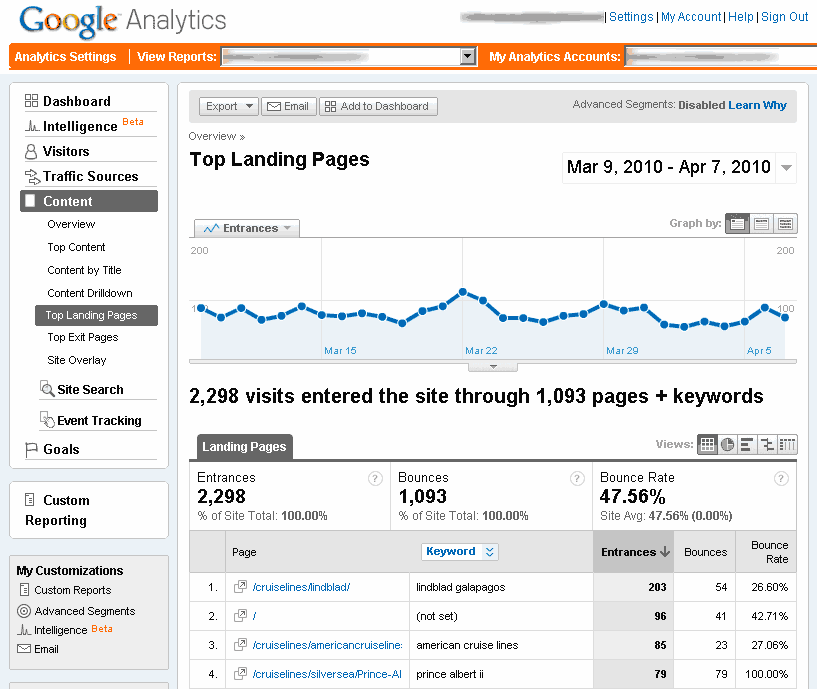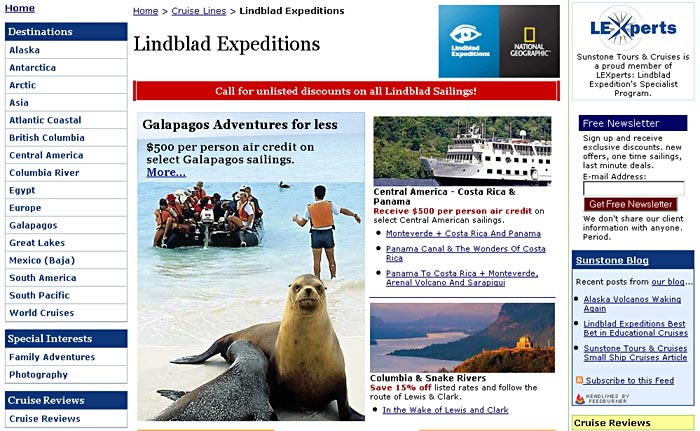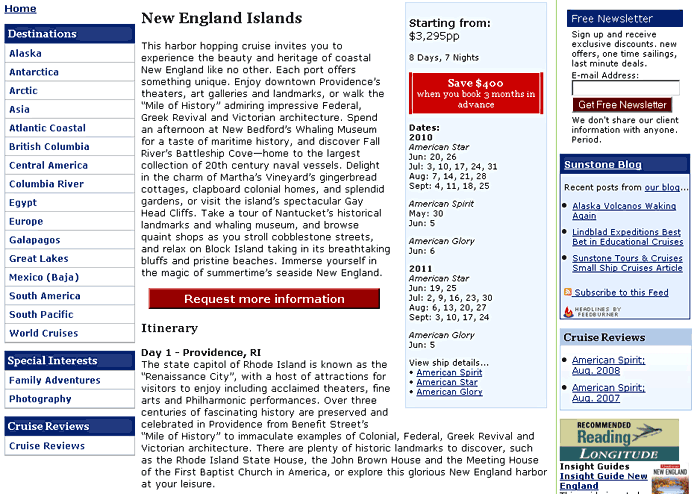Improve Website Relevance & Conversion via Google Analytics
Search engine optimization is an ongoing task that covers a variety of aspects of your website. One item of note is the relevancy of your landing pages. I’m not referring to search engine ranking, but meeting the expectation of site visitors when they first arrive on your site.
Here’s an exercise that can improve your website’s landing pages. The article assumes you have your site hooked up to Google Analytics. If not, stop reading, register the site and install the code.
A Landing Page is any page that can act as a front door to your site, from direct, referred and search engine traffic.
This is a task that you should perform on an ongoing basis, to determine whether the pages of your website are relevant to the search terms used by humans.
Open up Google Analytics and under Content, select Top Landing Pages. Then, from the dimension drop-down, select Keyword.

Here’s the point; you want to see how your landing pages fare based on the search terms used. Let’s take a closer look at a few of our top landing pages.

The first landing page is focused on Lindblad Expeditions, a supplier of expedition cruises and tours. The top search term for this page is “lindblad galapagos.” The bounce rate is fairly lower, but can always be improved. Let’s take a look at this landing page.

While the page is not specifically focused on “lindblad galapagos,” there’s a prominent promotion at the top of the page that shouldn’t be missed. Note: The business has a microsite that better matches this search term, and ranks better than the page above.
Let’s take a look at another example.
In this example, you’ll notice that the bounce rate is fairly high. A bounce is when a person lands on a page from outside the site, then leaves the site without visiting another page on the site, typically within a short period of time. A bounce should be understood as an interaction where the expectation was not met. The higher the bounce rate, the more likely a page is not meet site visitor expectations. So let’s take a look at this page.

Experience tells me that there’s some things we can do, and other we have little control over. Regarding the search term, while it appears early in the opening paragraph at the top, it still might be missed by site visitors. One possible solution would be to ad a sub-heading with the search term included in the heading. We might even add the term to the page title. However, the price tag for such a cruise might also contribute to the bounce rate. This would show signs of targeting the wrong audience. So further work will need to be done to exclude value-priced travel packages while drawing in the more affluent.
Let’s take one more look at a problem page.

In this example, the landing page has drawn traffic for the search term “national geographic islander ship.” The term refers to a ship, while the page focuses on a cruise itinerary, ergo the higher bounce rate. What might be the cause. First, let’s take a look at the search engine result.

You’ll notice that the search snippet starts with “View ship details…”. That could be what lead these individuals to click on this search engine results, then bounce back, as their expectations were not met. In this case, Google created a snippet based on the text around the search terms. While a meta description tag is implemented, it does not include proper search terms. Beefing up the meta description for this page will likely resolve this issue.
As you can see from these examples, there’s never a shortage of work to be done to improve the optimization of your website.
